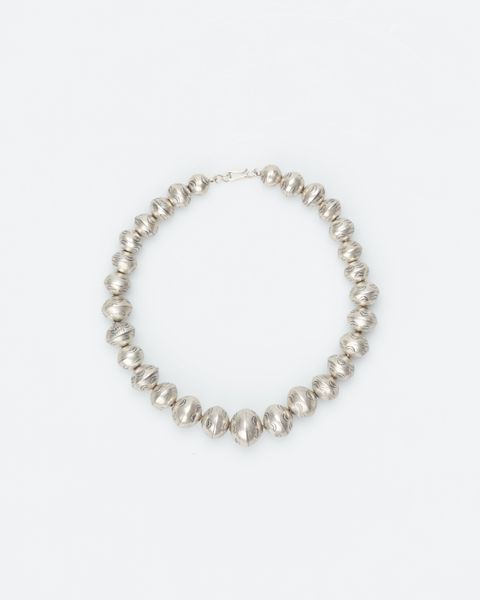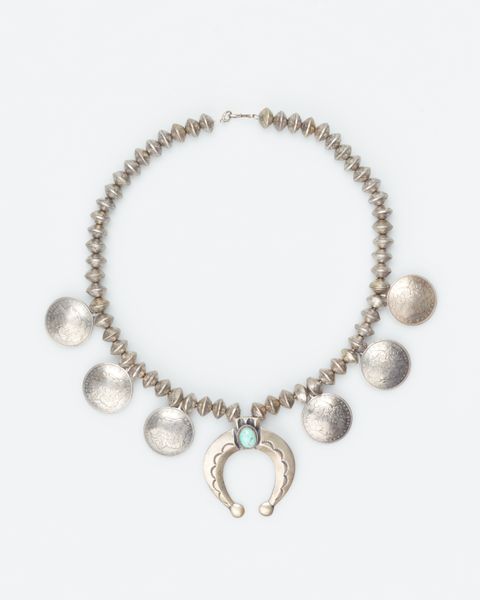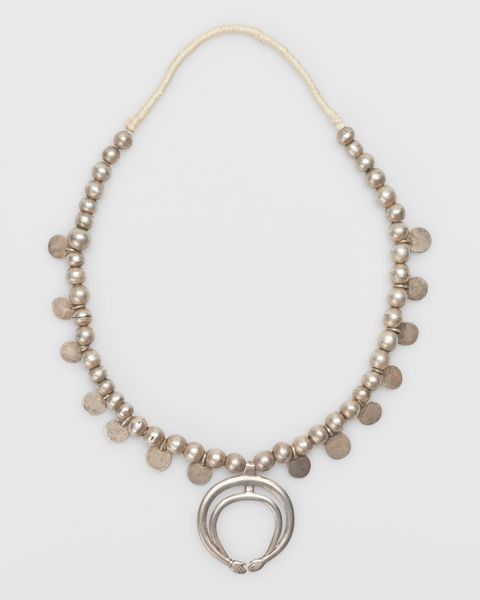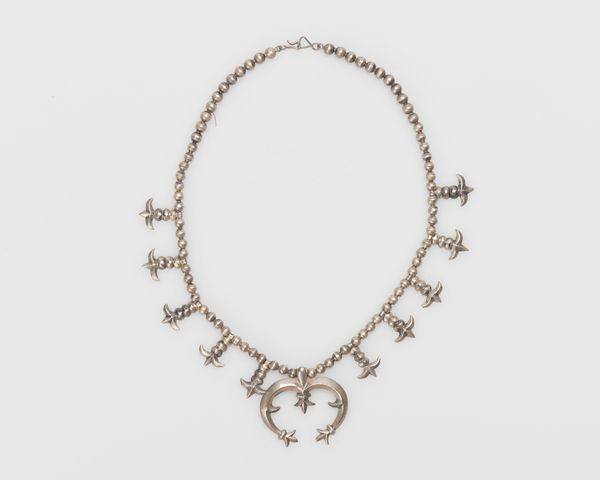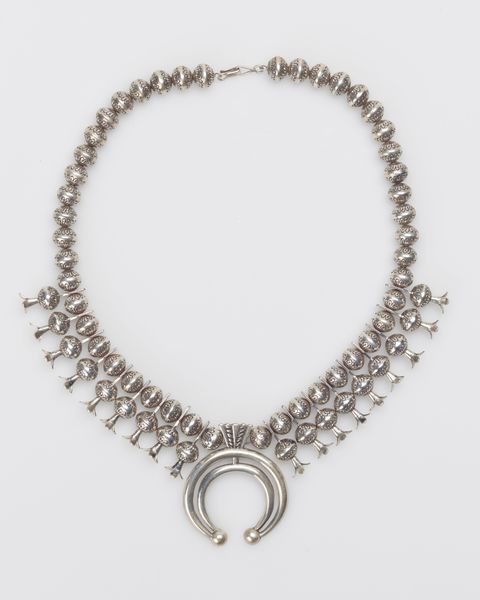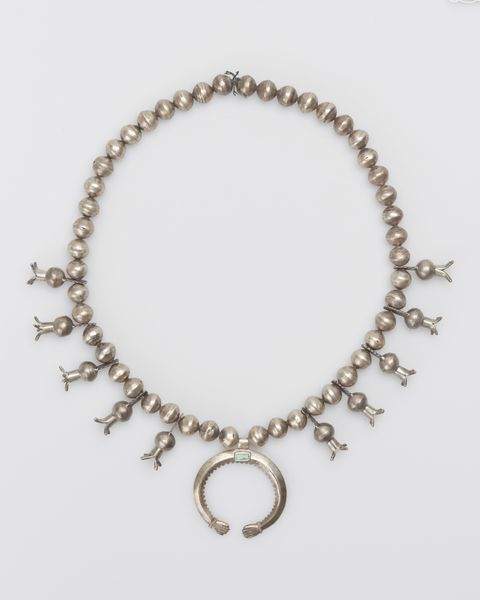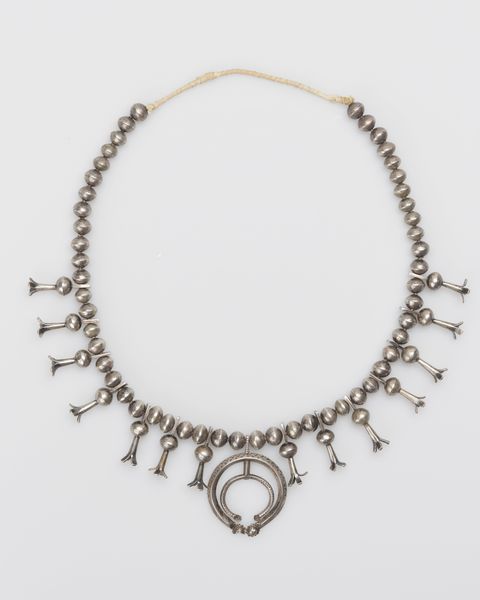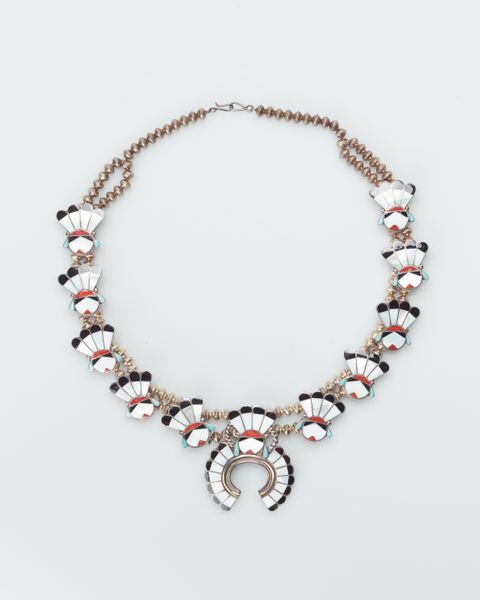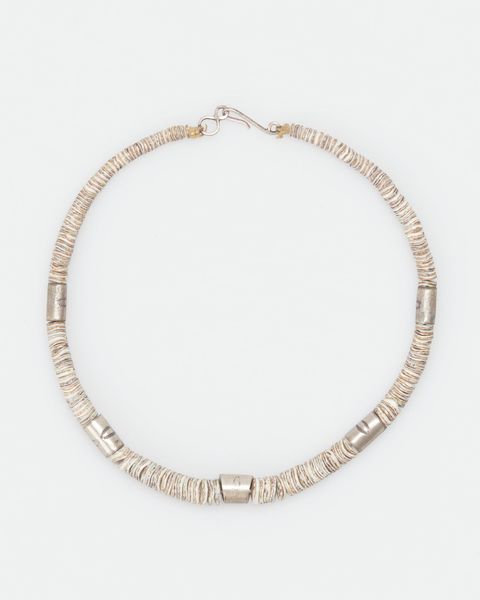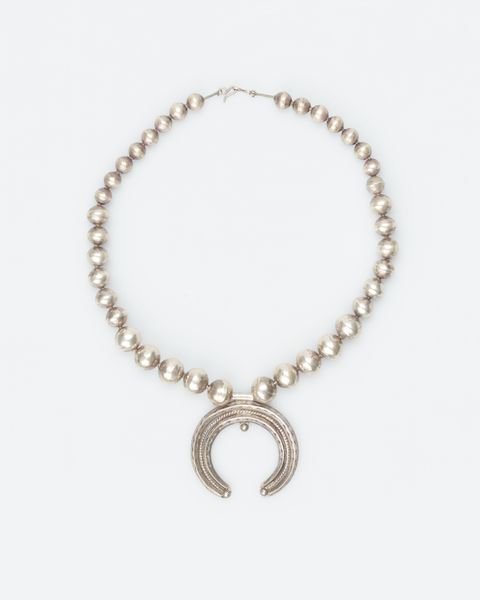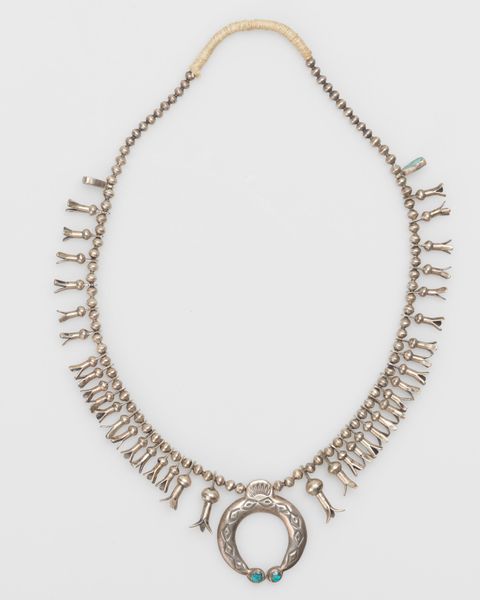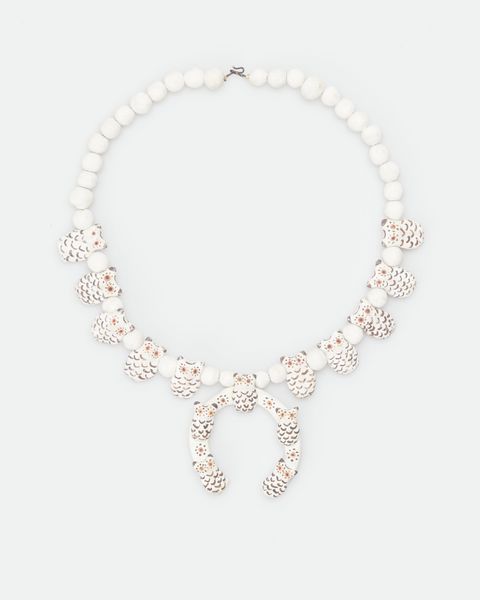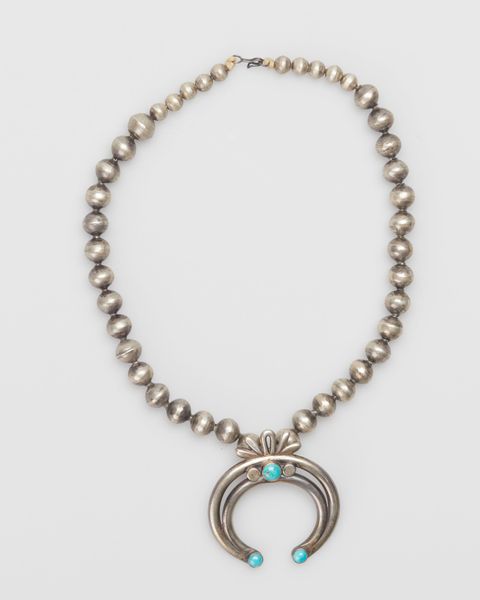
silver, metal
#
silver
#
metal
#
indigenous-americas
Copyright: Public Domain
Editor: This is a "Necklace," made around 1950 by a Navajo artist, using silver. The silver beads have these intriguing grooves and markings... it feels both ancient and modern at the same time. What strikes you about this piece? Curator: It's crucial to consider the labour and material involved. Silver wasn’t traditionally mined and processed by the Navajo people; it arrived through complex colonial exchanges. Editor: So, this piece speaks to something beyond just aesthetic beauty? Curator: Precisely. Each bead represents hours of skilled labor using tools also acquired through trade or sometimes forced upon them. Think about the silversmith: what were their working conditions? Who were they selling to, and at what cost? The decorative tooling might reference indigenous cosmologies. Editor: Ah, I see what you mean. So even in something seemingly simple, like a necklace, there's a whole story of production and consumption tied to it? How does viewing it as 'decorative art' affect how we see it versus fine art? Curator: Labelling it as 'decorative art' can be dismissive, obscuring the socio-political dynamics embedded in its creation. It pushes it into the realm of craft and away from serious critical consideration. It becomes a mere commodity instead of an embodiment of resilience and cultural adaptation. The history is right there, pressed into the silver itself. What did you think when you called it both ancient and modern? Editor: I see your point. By focusing on its materiality and production, we can appreciate the historical complexities embedded in what might appear at first glance as simply a decorative object. Curator: Exactly! Thinking through those connections gives new respect for process, tools, and, of course, the artist themselves.
Comments
No comments
Be the first to comment and join the conversation on the ultimate creative platform.
